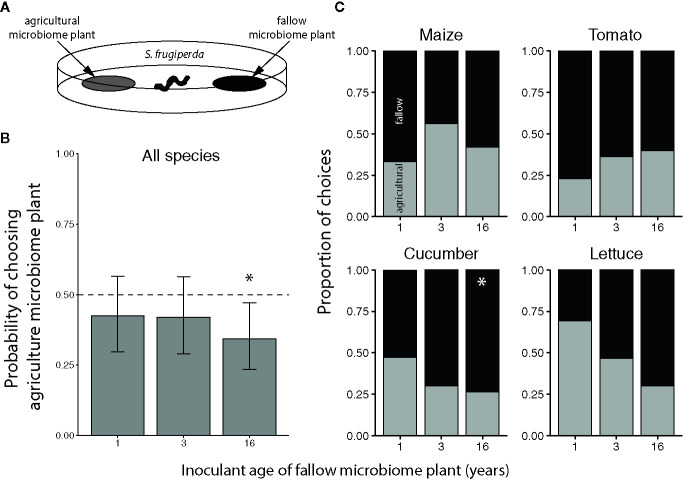Figure 5.
Feeding preference of Spodoptera frugiperda for maize (Z. mays), tomato (S. lycopersicum), cucumber (C. sativus), and lettuce (L. sativa) inoculated with agricultural or fallow microbiomes of different ages. (A) Neonatal S. frugiperda larvae were simultaneously presented with a disc of leaf tissue from a plant inoculated with an agricultural soil microbiome and a disc of leaf tissue from a plant inoculated with a microbiome from a fallow field (1, 3, or 16 years post-agriculture) in an arena. All choice tests were performed within plant species. Choices represent the microbiome treatment of the disc each larva was first observed to eat. (B) Probabilities (with 95% confidence intervals) of selecting the agriculture microbiome-inoculated plant averaged across plant species; the dashed line indicates an equal preference for agriculture- and fallow-microbiome treated plants. (C) Choices by crop species; light grey bars indicate the proportion of larvae that chose the plant treated with the agricultural soil microbiome whereas the dark grey bars indicate instances in which the fallow microbiome plant was chosen. N = 10-20 tests per plant species × fallow inoculant age level after omitting larvae that did not feed within the 2 h trial. An asterisk (*) indicates a significant preference.

